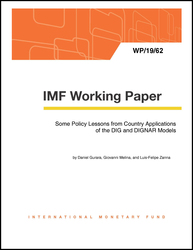
Some Policy Lessons from Country Applications of the DIG and DIGNAR Models
Over the past seven years, the DIG and DIGNAR models have complemented the IMF and World Bank debt sustainability framework (DSF) analysis, over 65 country applications. They have provided useful insights in the context of program and surveillance work, based on qualitative and quantitative analysis of the macroeconomic effects of public investment scaling-ups. This paper takes stock of the model applications and extensions, and extract five common policy lessons from the universe of country cases. First, improving public investment efficiency and/or raising the rate of return of public projects raises growth and lowers the risks associated with debt sustainability. Second, prudent and gradual investment scaling-ups are preferable to aggressive front-loaded ones, in terms of private sector crowding-out effects, absorptive capacity constraints, and debt sustainability risks. Third, domestic revenue mobilization helps create fiscal space for investment scaling-ups, by effectively containing public debt surges and their later-on repayments. Fourth, aid smoothens fiscal adjustments associated with public investment increases and may lower the risks of unsustainable debt. Fifth, external savings mitigate Dutch disease macroeconomic effects and serve as fiscal buffers. The paper also discusses how these models were used to estimate the quantitative macro economic effects associated with these lessons.
Publication date: March 2019
ISBN: 9781498302883
$18.00
Add to Cart by clicking price of the language and format you'd like to purchase
Available Languages and Formats
| English |
Prices in red indicate formats that are not yet available but are forthcoming.
Topics covered in this book
This title contains information about the following subjects.
Click on a subject if you would like to see other titles with the same subjects.
Natural resources , Public Investment , Debt Sustainability , Small Open DSGE Models , Developing Countries , , public capital , capacity constraint , concessional , front-loaded
Summary
Copyright © 2010 - 2024
Powered by:
AIDC



